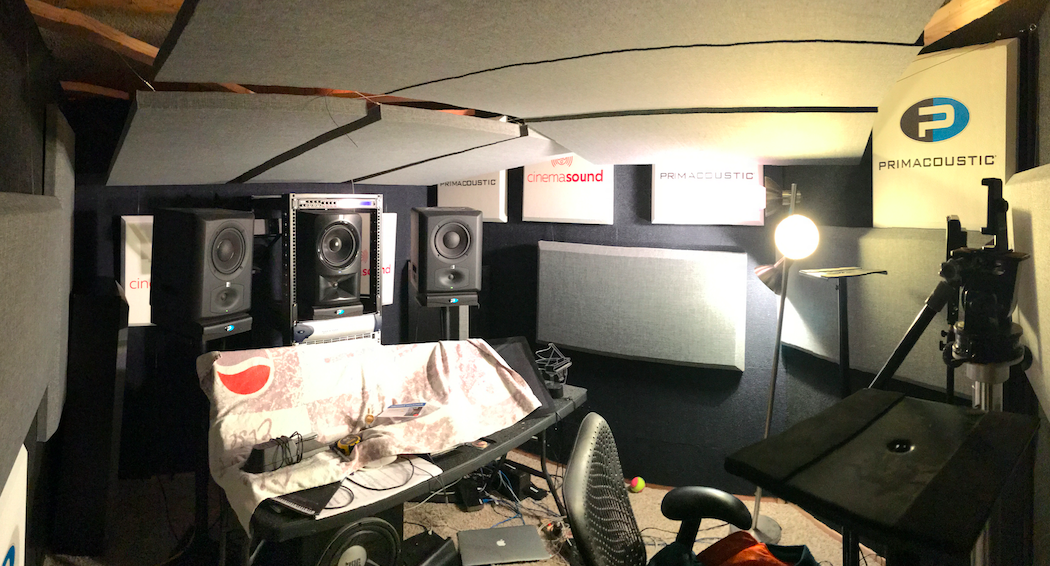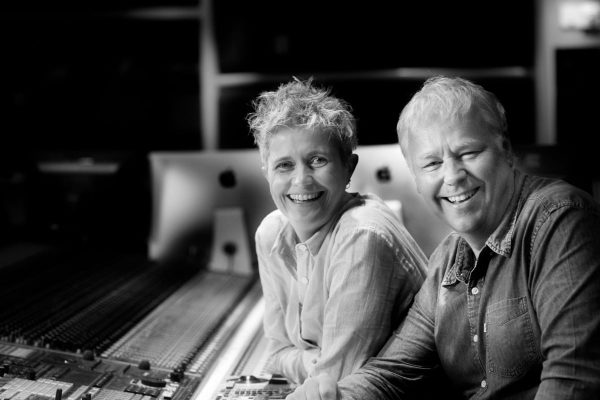The proliferation of home studios is an undeniable reality in the music industry, and everyone from long-time professional musicians through to emerging talents are investing in their own. While digital technology is perhaps the sexiest and most interesting part of the budget and plan, it’s widely accepted that some investment in acoustic treatment is a necessity. Particularly if the end result of all these efforts is to compete with recordings completed in a traditional large-scale recording studio.
Similarly, in the visual realm, digital technology is making it such that known and unknown filmmakers (perhaps better defined as ‘media creatives’ as most are recording in digital formats), are making and self releasing films looking to compete with the product coming out of, again, the traditional large-scale studio. Technology has never made this more possible than now. Exciting prospect for many, right?
Right. With the appropriate tools and talent anything is possible. So, what are so many media creatives missing despite being armed with ambition in spades and the latest digital camera and editing software? According to Mark Edward Lewis, owner of online education website Cinema Sound, they are missing about 80% of the equation — top notch audio. Yes, you read that correctly, 80%. “We take a lot of heat about this, until we pose this question: “If sound and imagery were really 50/50, then audiences would like a good video/bad audio scene as much as a bad video/good audio scene.” And if you step inside Lewis’ impressive educational offering, he shows you examples that support his declaration should anyone have doubts as to its validity.
So why is it that so many media creatives believe that audio (at best) represents only 50% of the equation? Lewis explains: “The problem is, [they] believe George Lucas’ whimsy as truth “Sound is 50% of the picture.” He was joking. If sound were 50% of Star Wars, he wouldn’t have hired the greatest composer of our time and the greatest sound design team of all time to create its sound track.” But still, this narrative prevails and it’s one that Lewis is working hard to correct. With over 85 hours of education on his website, he offers what he describes as “what every media creative needs to get Hollywood-level sound in their productions and deliver it at a professional level.”
It’s not difficult to imagine the enormity of the task to deliver on that statement considering the audio for video component of education in film schools has been so significantly under-emphasized. Prior to starting Cinema Sound Lewis was part of an educational tour covering North America and Australia, seeing over 1,200 filmmakers, all trying to figure out sound-for-picture. “At every stop on the tour I queried the audience about their film school experience and education regarding sound. I unswervingly got the same response: “I learned how to hold a boom pole and not go over zero on the meters of the recorder.” I can further assure you that when we did the holding the boom pole section of the event, they hadn’t learned that but thought they had. My experience with our Cinema Sound members is much the same which is why they covet the education on Cinema Sound.”
Once Lewis gets his students to the point of having captured high quality audio, his work is not done. In fact, this is where he teaches his students that they might not be hearing what they think they are hearing. This can be a confounding prospect for the students considering all the time and effort that has brought them this far. Lewis’ challenge is to teach the lesson that musicians and producers have known for ages. Unless you are mixing your recording in an acoustically treated space, you are taking a wild stab at what your audio tracks will actually end up sounding like and how they will translate in various playback spaces be that a theatre, car, club and on different devices such as televisions and smart phones. “If the most honed minds in the business have wonderfully tuned and treated rooms, why would anyone think they shouldn’t too?” Lewis’ caveat: “If media creation is simply a hobby, keep enjoying your hobby, but if you want to compete, you must have the basics: “Good speakers in the right place at the right angle at the right volume (isolated and stabilized) and primary reflections taken care of.”
To demonstrate this, Lewis has created several videos as part of his education program and enlisted Canadian acoustics manufacturer Primacoustic, to treat the Cinema Sound studio. “To get it done right, having materials which are made by professionals is advisable. Taking the surgical foam from your mattress and stapling it to your walls doesn’t help as much as you’d think, and your reflective desk does more damage to your mix’s translation than any amount of treatment you’d put on the ceilings or floor – to say nothing of what your speakers are lying to you about sitting on that desk.” Cinema Sound’s studio B was treated with a combination of Primacoustic Broadway fabric wrapped panels, Paintables™ printed panels, Bass Traps, Nimbus ceiling clouds and Recoil Stabilizers for speaker isolation — to help those speakers tell the truth.
The space presented some challenges being that it is a portable studio. “Even though our situation was complex, we were still able to get a powerful reduction in primary and secondary reflections as well as a 15 dB reduction in ambient noise. In fact, once installed, we started noticing the self noise of the 5.1 speaker installation we have in the studio – which we never heard prior to that.” In a typical fixed space Lewis reiterates how simple and straightforward the process is and of course supports each of his claims with a video so students of Cinema Sound see how the space was physically treated as Lewis takes them from unboxing to product assembly thru to completed studio space.
Despite being the venerable expert educator for all things audio for video, there presented an occasion in the process of treating Studio B where teacher became student. Lewis generously (and humbly) shares the experience: “Outside the studio is a waiting room/living room where there’s a flat screen and a 5.1 system for watching movies etc. It’s a pretty good custom-built system by yours truly. When the Primacoustic kit came, we unboxed it and leaned it up against a wall temporarily while we finished reinforcing the walls of the studio in preparation for the treatment. Well, it took us longer to retrofit the walls than we thought, and the Primacoustic treatment stayed in that waiting room for over a week. One night, I was watching a movie in this room (which has no treatment at all), and I notice that the entire left side of the system was not only low in volume but darker than the right. It’s Lf and Ls. Re-patching cables did nothing. Switching speakers did nothing. Turning up the left channels helped, but it still felt dark. It’s not until the eureka moment of me looking at the left wall of the room – plastered with Primacoustic panels two rows deep – that I realize that the speakers were fine. The room ambience and reflections on the left side of the room were being wiped out by the panels while the right side was doing its normal bouncing-about. It was a great moment to realize the importance of absorption and diffusion verses straight reflection. It wasn’t funny until I figured out what was happening!”
Despite it being accidental, Lewis’ experience illustrates the importance of balanced acoustic treatment in an editing suite. Lewis reiterates: “The Cinema Sound mission is to improve the production value of independent media so much that it competes with Hollywood-big-budget media so that the general public chooses Indy projects as much as Hollywood projects. The best way we know to do this – and the most efficient in time and budget – is by improving audio and it doesn’t cost a bank-account-full to treat your room.” The simplest starting point solution from Primacoustic is their prepackaged room kits designed to treat rooms of various sizes. These retail from between $249.99 USD – $1575 USD. To simplify things even more, the company website features a form that media creatives can submit to receive a complimentary treatment plan and quote.
For more information on Primacoustic and the Free Quote Form
For more information on Cinema Sound




